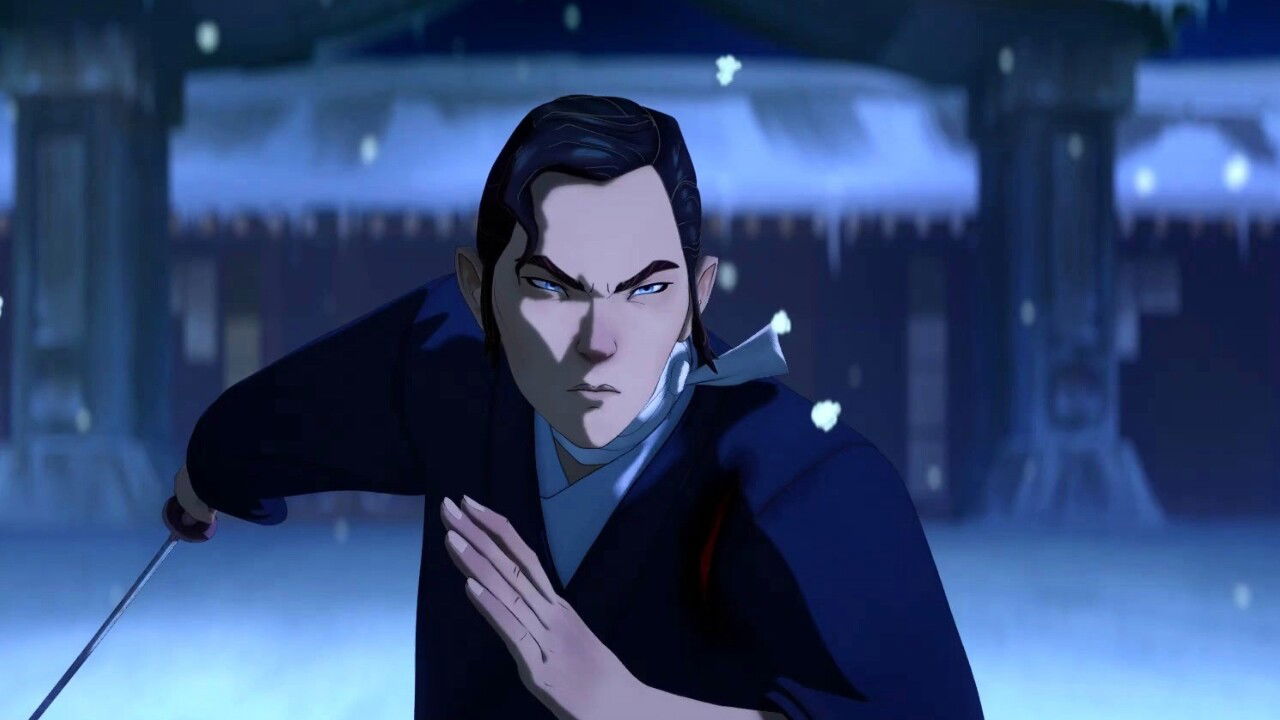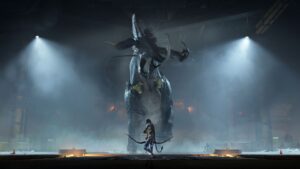There is one person who is a significant contributor to making masterpieces with time, accuracy and consideration. Toby Wilson is the production designer on Netflix’s Emmy Award-winning animated series Blue Eye Samurai, and he gave an important talk at SCAD AnimationFest 2024. Wilson provided a behind-the-scenes look at parts of Blue Eye Samurai while answering questions from the SCAD students, offering deep insights into how they can be successful, too.
His talk discussed so many great things about Blue Eye Samurai: the research and attention to detail on how the setting and location designs would amplify Mizu’s journey, the loads of fact-checking the colour palette and style of 17th century Japanese fashion; and the efforts their team went to tell an authentic bunraku puppet story in episode 5, The Tale of the Ronin and the Bride.
Wilson’s journey began with eight years working at EA on Goldeneye: Rogue Agent and the 2010 revamp of the Medal of Honor game series. The franchise began with Steven Spielberg at the helm of the first few games back in 1999. Then, he worked on Planes: Fire and Rescue and other projects at Disney for about seven years. Afterward, he spent almost three years at Sony Pictures Animation, adding The Mitchells vs. the Machines to his portfolio—preceding Blue Eye Samurai.
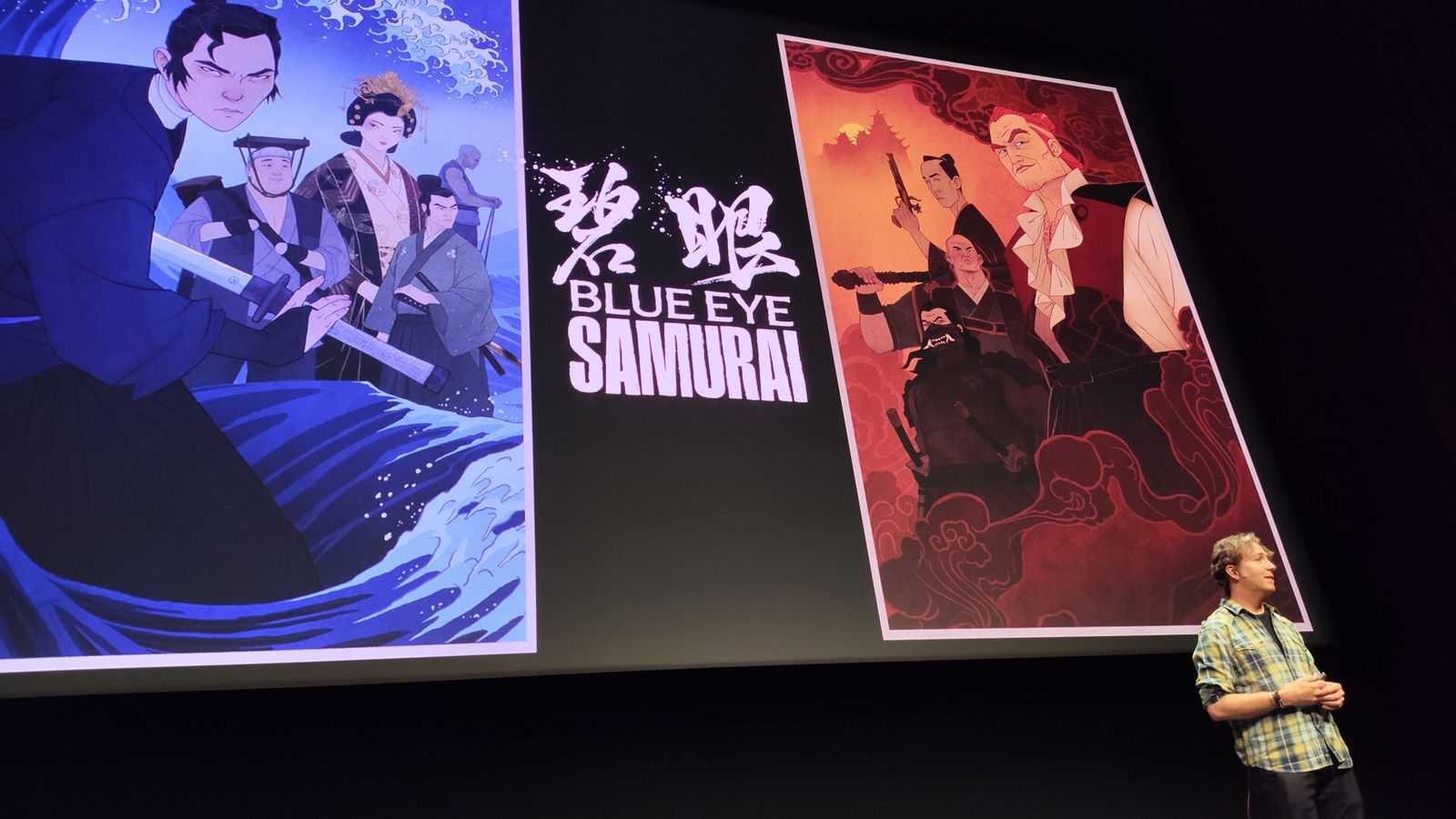
CGMagazine was also able to discuss Wilson’s drive to tell accurate, well-documented stories since his days at EA all the way up to his current work on Blue Eye Samurai Season 2. He shared some insights on what could be coming up in the second season, noting how there is still “a lot of story left to tell.” We can all rejoice that this beautiful tale on Netflix will be fully fleshed out.
I love what you talked about today about all the research that went into Blue Eye Samurai, and I wanted to go back. Today, a student asked about your origin story in the industry. You mentioned EA and Medal of Honor (2010). I was curious if that was where you started getting invested in so much research and if that translated into the extensive research for Blue Eye Samurai.
Toby Wilson: The thing with Medal of Honor (2010), those are real stories. Those were actual people, and you need to be respectful. That was actually one of the things that I was mentioning when we started the project, is that we need to be inspired by real events. But, I don’t want to tell a story of an actual person in a video game where the player has control and can do whatever they want. Because these could sometimes be men and women who died, and they gave their lives for the country in that operation.
Because the player has control, I don’t want them to videotape themselves tea bagging and doing stuff like that, right? And so, we need to do due diligence. We need to be respectful of that but make sure that it’s historical fiction. All of our characters aren’t real, but the operation was real [in Medal of Honor], and we did our research on the locations. And that’s the same thing with Blue Eye Samurai. We don’t have any historical figures, but our shogun is a fictional shogun. But he is based on an actual historical one.
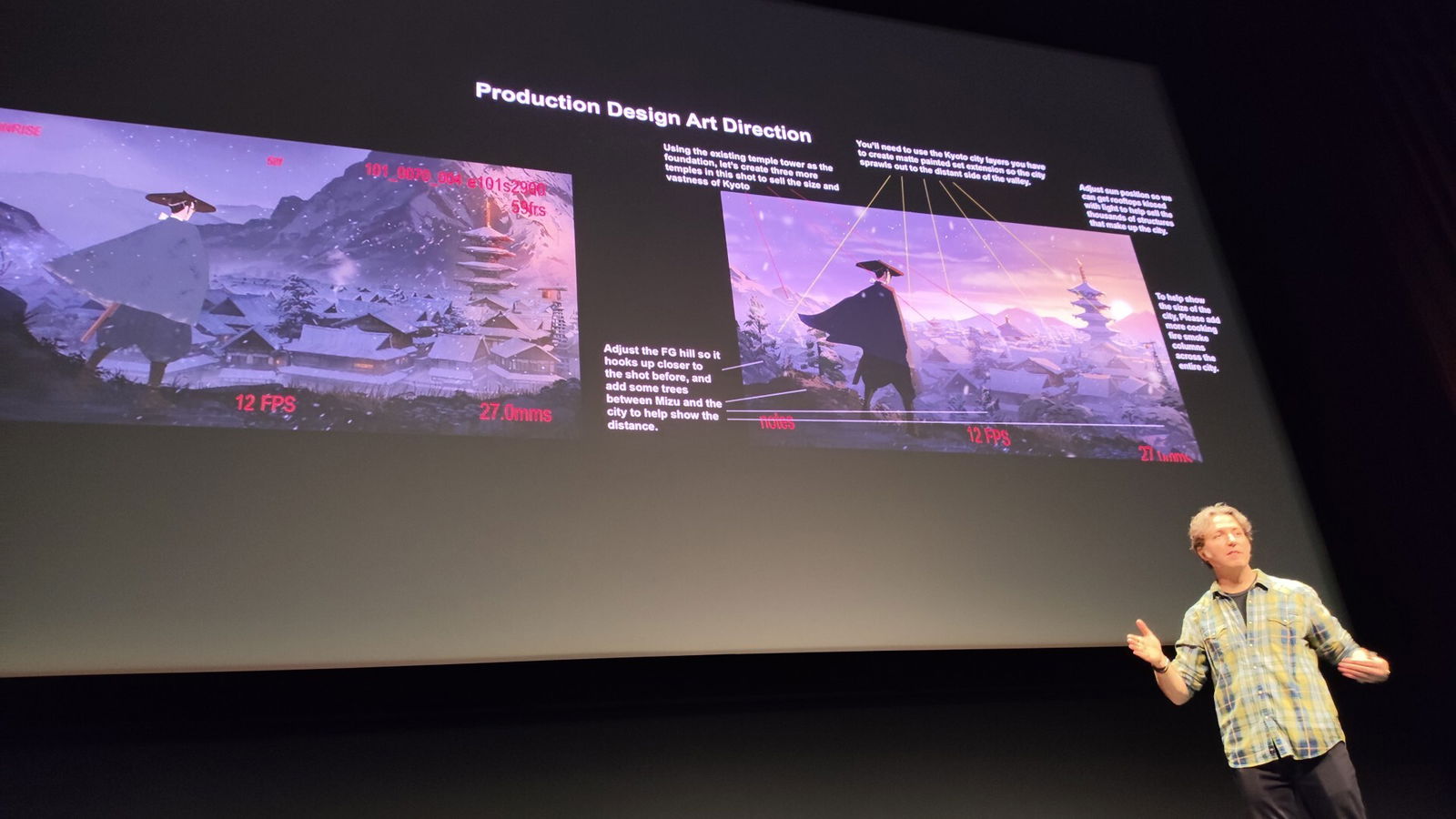
I thought Blue Eye Samurai being a historical fiction story was cool because you can play around and take some liberties.
Toby Wilson: Yeah, it frees you up, too, because you don’t want to be a slave to what actually happened. Michael Green and Amber Noizumi are our showrunners/writers. It frees them up to tell the story that they need to in an actual historical setting. The fire of 1657 actually happened. Were you there? No. Was this person there? And everybody’s perception of what actually went down—the stories and everything, you’ll hear a bunch of different things. And so it allows us to say, ‘Okay, we’re going to tell our story. Guess who started it? It was Mizu.’ And it’s fun.
“We have new consultants for that, specifically specializing in those new cultures that we’re going to go see, and the new locations and fashion and all of that.”
That’s a fascinating aspect of the storytelling. And the fact that this is an animated series that isn’t 22 minutes long but a full hour—there’s more story to tell. But were there still any cuts made?
Toby Wilson: With our scheduling, because we were trying to get every dollar on the screen, there’s very little to almost nothing on the cutting room floor. From what we made, a lot of the really hard cuts we made in the beginning. So before we make them, we make those cuts. That’s where I’ll sit down with the directors, our supervising director, Jane Wu and our showrunners. We’ll look at what the story needs, what’s our budget, and what’s our schedule.
And we have to really strategize, ‘Okay, where are we going to put the money?’ Because we want all the dollars on the screen, we’re wasting nothing. Use all parts of the buffalo, as they say, and that was probably the biggest challenge of the show. Because the scripts were huge, and we wanted to make everything, and, hopefully, you guys didn’t notice, but we did have to make creative sacrifices.
There were more locations and there were more effects, but we had to make those cuts before we made them because we couldn’t afford to. ‘Let’s just try it out like, No, no, no, we need every penny to make this thing.’ So, that’s where we just had to use our experience and our collective creative brains to make sure. Hopefully, we made all the right choices. And hopefully, you guys liked what we made.
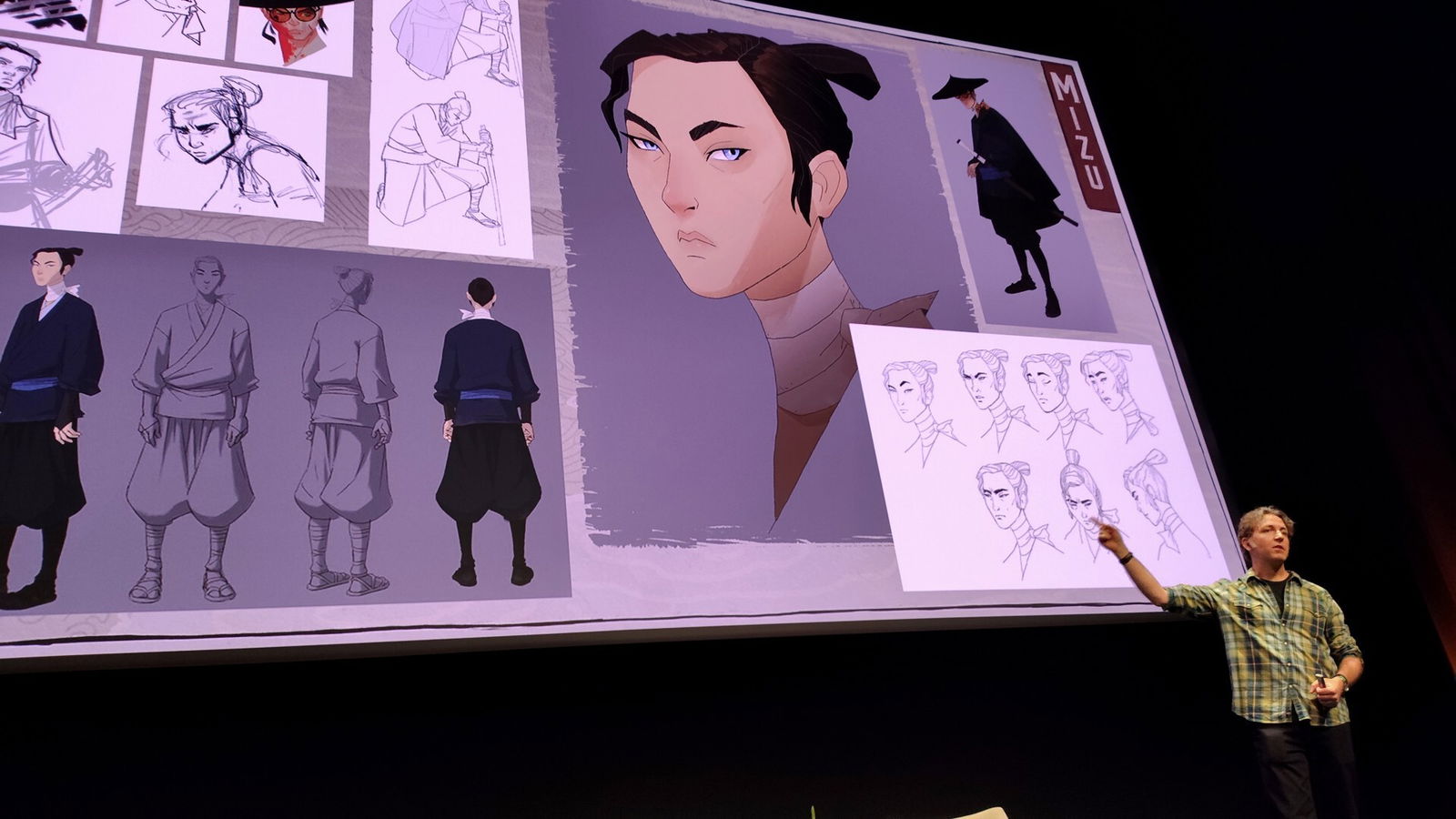
Oh, for sure, we loved it! And I was curious about those cut locations. Could you say what locations were cut? Or is that something that’s going to be hinted at in season two?
Toby Wilson: Well, that’s the thing. Some of them may show up. I don’t think I can get into what got cut exactly, but I can speak in general terms. There were some temples that we couldn’t do. There were some travel montage locations that we couldn’t do. And like I said before, we built them. When we were about halfway through the season, we would talk with the showrunners and writers.
Michael and Amber were very responsible in the sense of, ‘Okay before we write this, what can we do?’ They would pitch some stuff, and we would say, ‘Yeah, I don’t know if we can do that, but what if we stage it here? Would that work? And can we do it? Can we do it just slightly differently? You can use different times of day, different dressing, [and] the lighting changes everything.’
They were very receptive to that. Because, again, they too want to write something and make sure it’s going to be as good as it possibly can be. And set us up for success so that we can visually execute it. So yeah, their sacrifices were made, but we made sure that we didn’t sacrifice what was truly important.
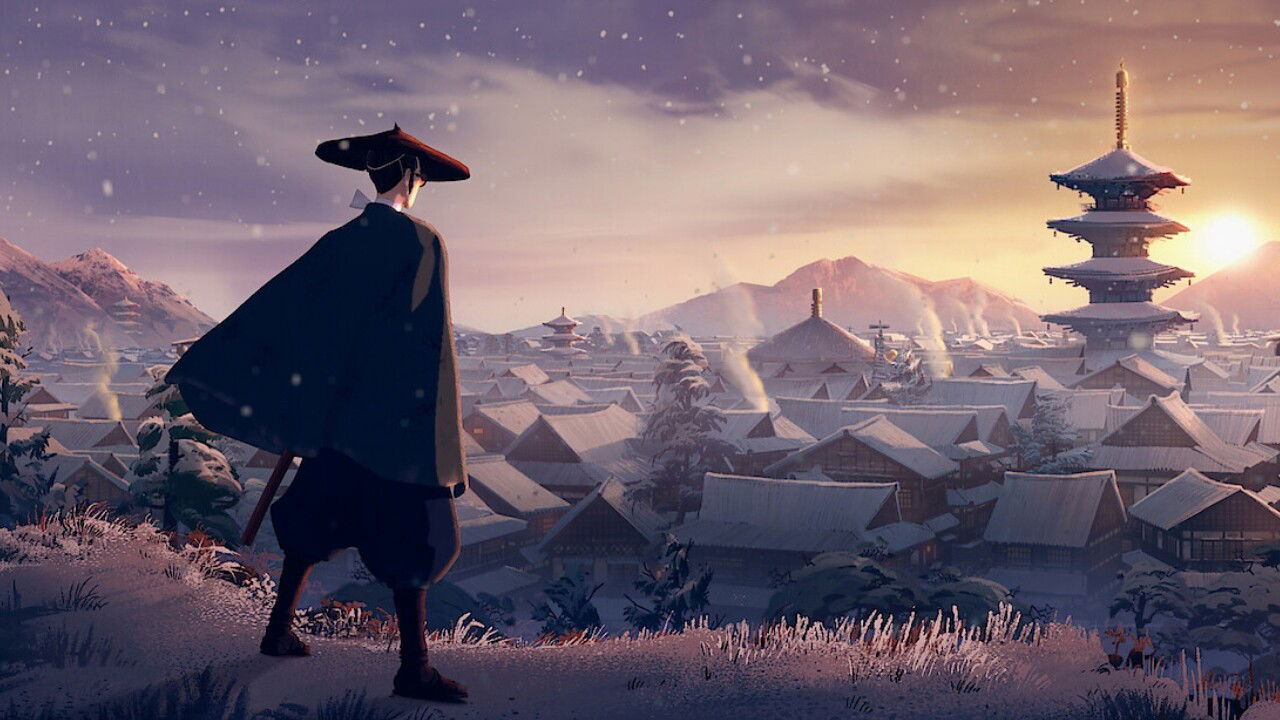
I think you all captured it really well.
Toby Wilson: Thank you!
“Blue Eye Samurai is a full-time endeavour. To do something of this scope and magnitude, it requires your full attention. So this is getting 100% of my attention right now.”
When you talked about Jane Wu having a fashion background for Blue Eye Samurai, I was curious if the visuals for fashion and clothing would be shifting as Mizu heads to London?
Toby Wilson: I can’t get into too many specifics. In the last episode of season one, Fowler says, ‘I have a magic word for you, London’, and we leave with [Mizu] on a ship. So it’s safe to say Mizu is heading after her other potential daddies. We will be going to more than just Japan. I can’t get into the specifics, but we’ve got a whole lot more research to do—which we’re doing. We’re actually in the process of making it right now.
We have new consultants for that, specifically specializing in those new cultures that we’re going to go see, and the new locations and fashion and all of that. We’re very cognizant of the time period to make sure that the costumes are accurate; the way that they wear them is accurate; [and] the colour choices that we pick—the patterns. Because they wrote a few lines and she heads off into the horizon, there’s a whole lot of work that we have to do now to make that happen.
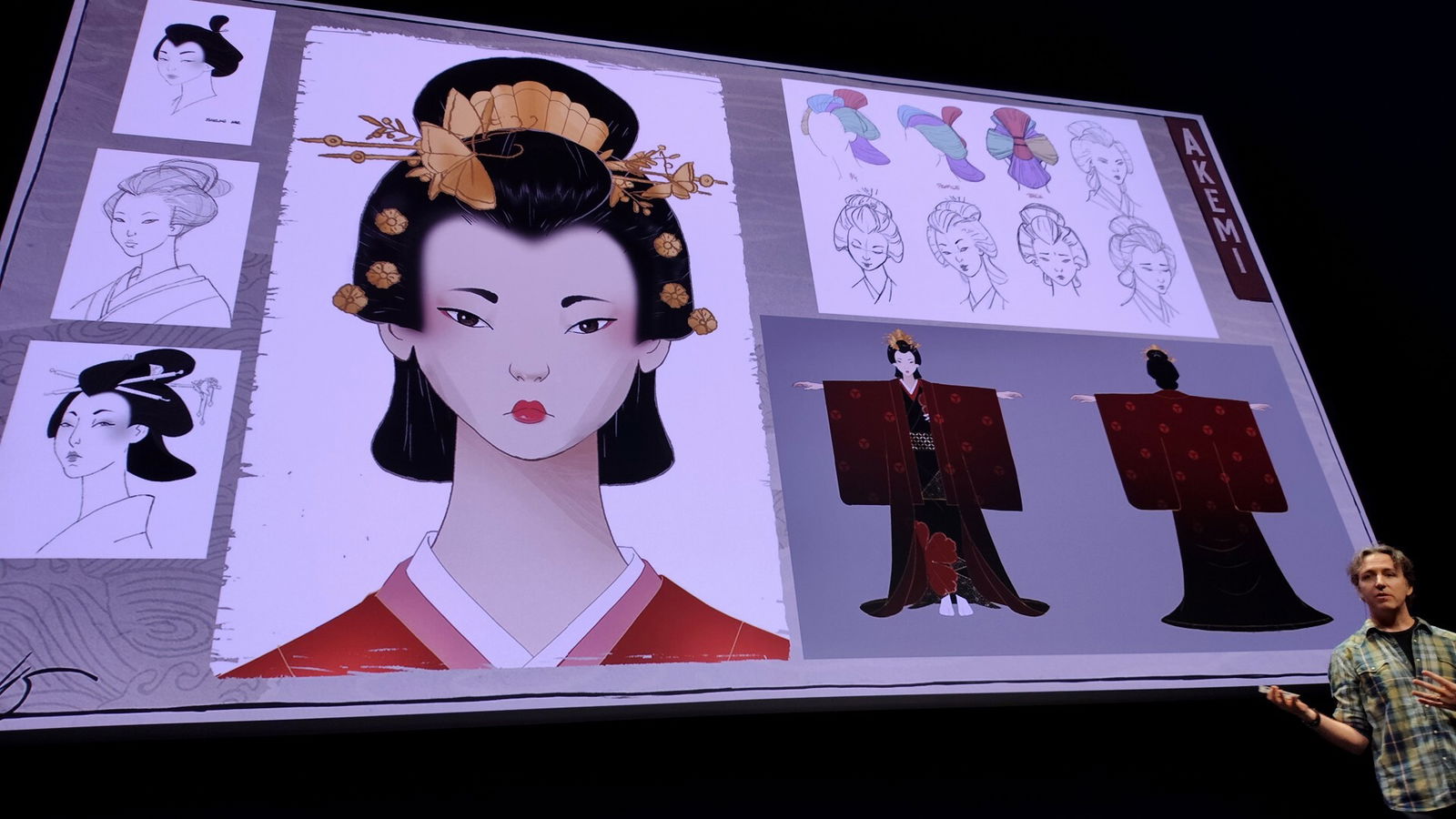
Okay, that’s interesting! Now, I think it’s not going to be a straightforward path to London.
Toby Wilson: I can neither confirm nor deny that. You can interpret what I said the way you like.
Oh, for sure. I can see Mizu making some stops along the way. It’s a long way from Japan to London.
Toby Wilson: It is but we also—I want to say we have a whole lot of story to tell. There’s a lot of story. I have read up to 204 now. It’s good! There’s some really fun stuff and some juicy drama.
Ah, so the scripts are on 204 right now? Wow.
Toby Wilson: But I can’t talk about them! We are in the process right now, though.
Last question, is Blue Eye Samurai a project you’re working on full-time or are you currently working on anything else?
Toby Wilson: Blue Eye Samurai is a full-time endeavour. To do something of this scope and magnitude, it requires your full attention. So this is getting 100% of my attention right now.
Awesome. Thank you for your time!
Toby Wilson: Thank you so much!
Blue Eye Samurai season one is currently available to stream on Netflix now.
